As an Amazon Associate I earn from qualifying purchases.
Smoked venison roast sounds like it should be awful, but when you smoke venison just to doneness, medium-rare or medium, it can be an amazing cut of meat, both for dinners and for lunches with the leftovers.
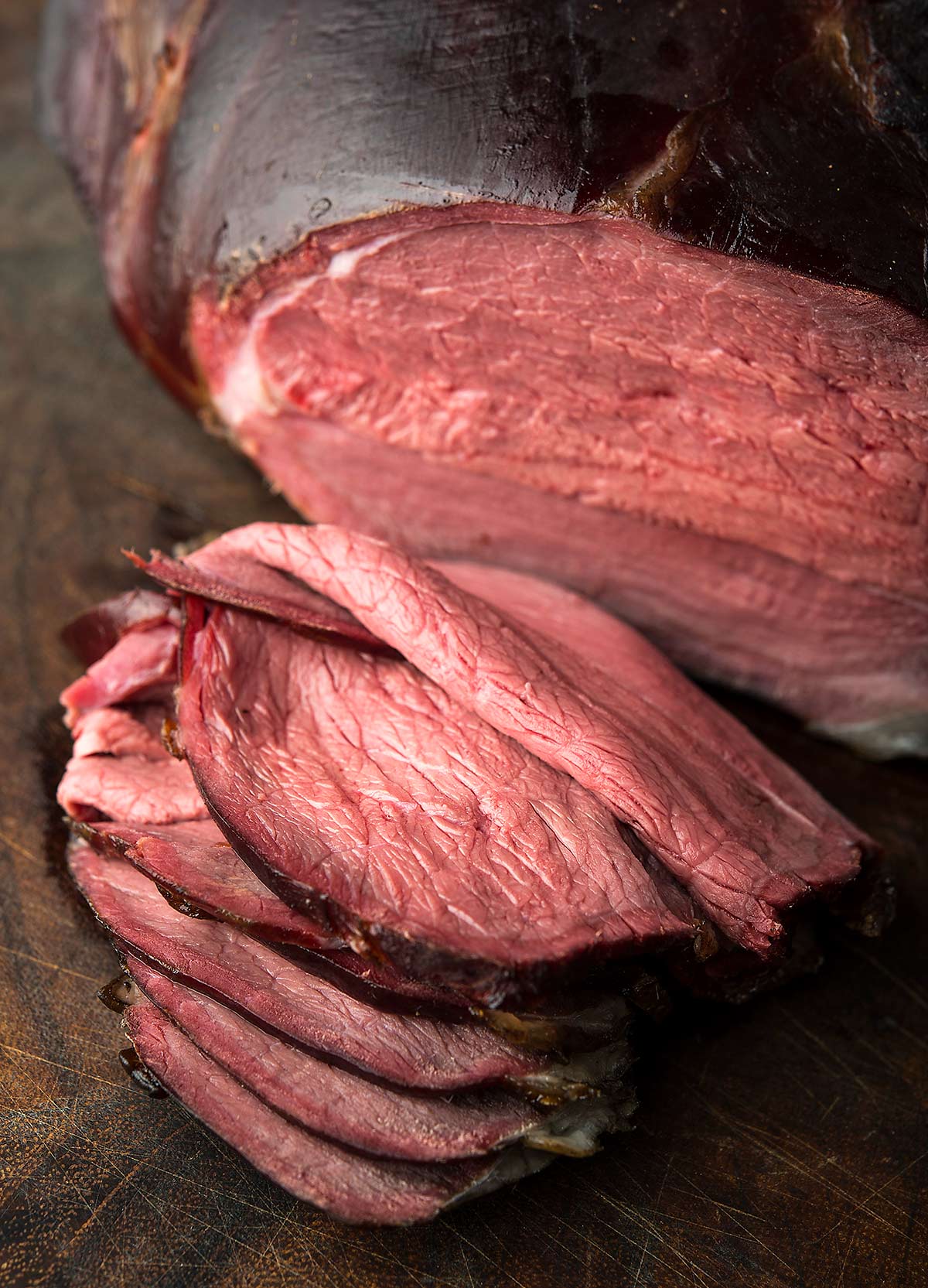
if you’re used to smoking pork, you’ll need to change your perspective. Smoked, pulled pork, gently cooked for many hours until it falls apart is one of the great things about being alive. But you can’t do that with venison, alas. Pork is, well, fatty. Porky, with lots of little packets of fat in between the muscle fibers that means a slow-smoked pork shoulder will baste itself.
Deer are lean, especially when you get to the interior of a cut. And fat, as you may know, is insulation — and insurance policy against cooking too long — so the fact that a venison ham has none means it can go from sublime to dog food in a matter of minutes.
So is there no way to properly make smoked venison roast? There is indeed, but you have to shift your barbecue compass to the West, to Central California, to be specific.
The only contribution California makes to the barbecue universe is called Santa Maria Barbecue, normally done with beef tri-tip, a cut from the lower part of the cow’s hind leg. It is wonderful stuff, smoky with a lovely spice rub. But here’s the thing: Santa Maria BBQ, or what we here in Cali just call “tri-tip,” is never cooked past medium. To do so is a sin.
Venison roasts, typically single-muscle roasts or those with just a few muscles — from the hind leg — are what you want when you make smoked venison. You make smoked venison backstrap similarly.
How do you get there? You can do what I call “smoke roasting” — I have a method for this in my cookbook Buck, Buck, Moose. That consists of tossing a hunk of meat into a hot smoker and cooking it until the meat hits the proper internal temperature.
Incidentally, if you don’t want to go through the multi-day salting and curing of the venison roast, you can use this recipe for reverse seared venison roast and get a similar result in one day. And if you are working with bison, which has tastier fat, you can make a full-on, Texas style smoked bison brisket.
To really make a nice smoked venison roast, you will want to salt it first. Not a full-on cure, but a nice salting.
You get there by using your digital kitchen scale. Yes, you must measure things for this recipe. You measure your hunk of venison. Do this in grams. Then you measure out 1 percent of that weight in regular kosher salt, and add an equal amount of sugar. If you feel like using a curing salt — I don’t — add no more than 0.2 percent of the venison’s weight. You’ll want a cure marked No. 1 here, not No. 2. Again, I don’t use curing salts, but you can.
Mix your salt and sugar together and get yourself a big tub or somesuch so you don’t lose any of it. Now you massage the salt/sugar into the venison, taking care to get it around the femur if you’re doing a whole leg, which is a cool thing to do if you have a teeny deer; the one in the pictures is an Arizona Coues deer buck.
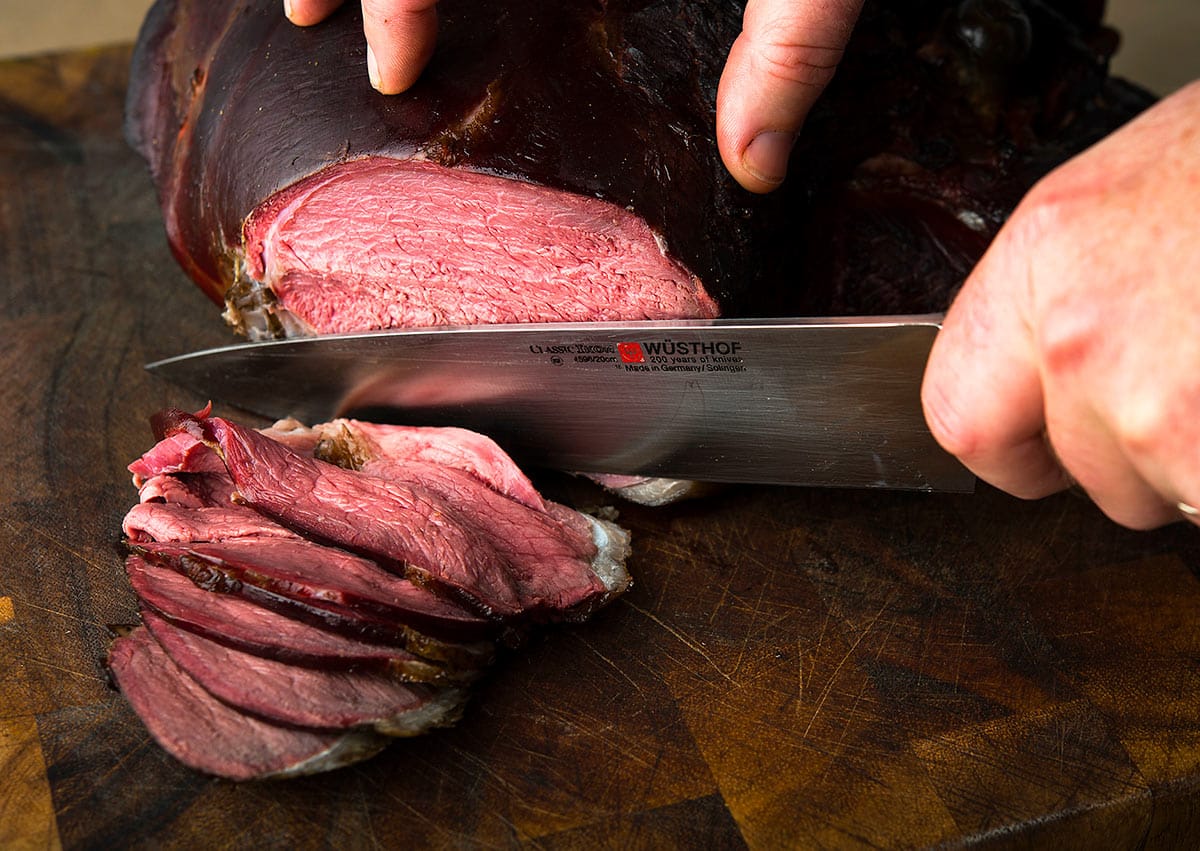
Now put your venison and any remaining cure into a big bag and set it in the fridge. How long? Two days per pound of venison. If you are going to err, err on the side of more time. When you’re ready, rinse the meat off, pat it dry and, if you want, let it sit uncovered in the fridge an extra day. You can skip this if you want, but it helps make the meat smokier.
Then you smoke the roast slow and low until the thickest part hits the temperature you want. I prefer 130 to 135°F. How do you know? You need an internal probe thermometer. I happen to have one that comes with the Traeger I use.
Wood choice is your own. I prefer fruit woods, but will use oak or hickory, too, depending on my mood. (The Traeger has all sorts of wood pellets you can use.)
That’s it. Measure your venison, lightly cure it in the fridge a few days, smoke it slow and low until it hits the right temperature, let it rest 10 minutes on the cutting board. Slice and eat.
This smoked venison roast is basically the best “roast beef” you’ve ever eaten. Don’t believe me? Try it.
Smoked Venison Roast
Ingredients
- One 5- pound venison roast (See notes below)
- 23 grams kosher salt, about 0.8 ounces
- 23 grams sugar, about 0.8 ounces
Instructions
- Mix the salt and sugar together and massage the mixture into every part of the venison. Do this over some sort of tub or container - a baking sheet works well - so you don't lose any. Put everything, including any stray cure mixture, into a large plastic bag or container that will just about hold the venison. Let this sit in the fridge anywhere from a week to 10 days. Turn the meat over once a day.
- Rinse off the meat and pat it dry. If you want, you can set the venison on a rack uncovered in the fridge for a day before smoking.
- Smoke the meat slow and low - I prefer somewhere between 175°F and 200°F - with an internal probe thermometer stuck in the thickest part of the venison. Do not let the probe hit bone. Smoke for between 2 and 5 hours, or until it hits an internal temperature of no lower than 120°F and no higher than 140°F. I prefer about 130°F.
- Let the smoked venison sit on the cutting board 10 to 15 minutes before slicing and serving. It will keep a week in the fridge and freezes well.
Notes
Nutrition
Nutrition information is automatically calculated, so should only be used as an approximation.
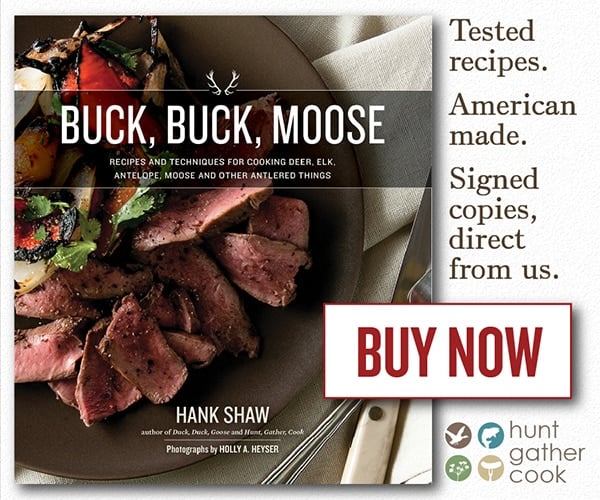


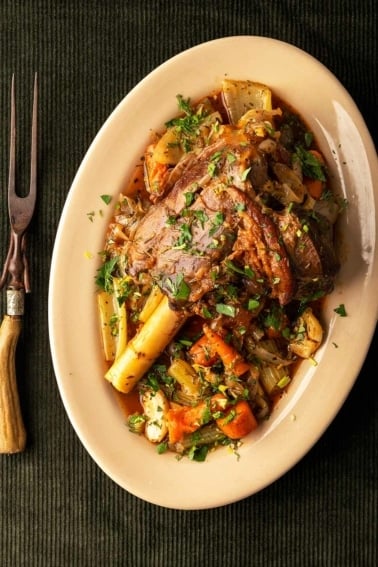
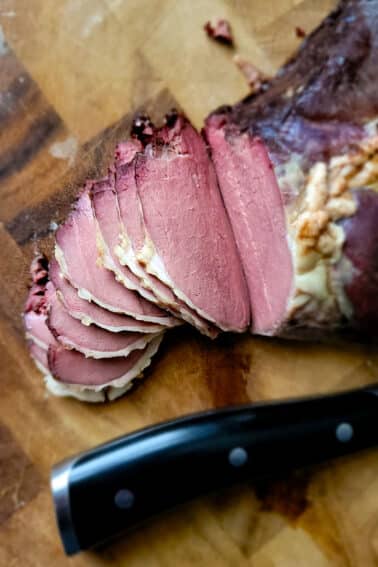
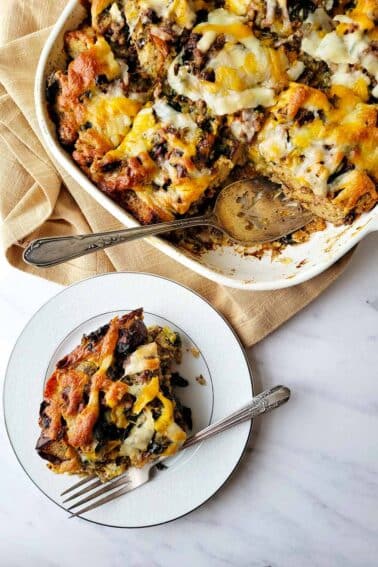
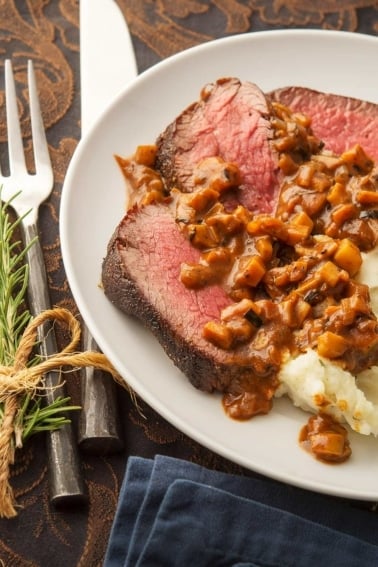
I made this recipe with a whole leg from an axis fawn that got caught in my fence and could not be saved. The leg weighed 2.25 lbs so I cured for 3 days and smoked for 2 hrs. My thermometer register done inside but the outside didn’t have much “crust” so I crisped up the outside with a butane burner (like I would with Sous vide cooking). It was delicious, and very tender! It had a hammy flavor from the cure. Served over some risotto and feasted for 3 meals. I will definitely do this with the other leg as well!
Just finished this with a 2lb top round roast. Put its on a toasted French roll, reheated in the oven with provolone and topped with giardiniera for an Italian beef-esque sandwich. Paired with a freshly home brewed German Altbier. Probably one of the best dinners had in a long time. Great recipe as always Hank!
Hi Hank,
I’m about to try this recipe for the first time. I have a high roast of a little under 2 pounds, that is currently frozen. Could you please delineate the best steps to go from frozen to in the fridge curing? Much thanks in advance.
Thomas: Thaw in the fridge, then start curing.
My husband is Diabetic. would this recipe work using monk fruit sugar, Splenda, etc. or a combination of both sugars, sugar free with sugar.
Barbara: Yes, I’d use the monk fruit sugar.
Wonderful recipe that I have been enjoying for a few years now. Unfortunately, I absent mindedly applied iodized salt rather than kosher on the most recent roast. For this recipe in particular, would there be a significant difference between using kosher salt and Morton brand iodized salt?
Jack: For this one, no, not a huge difference between salts. It’s finer, though, so you might accidentally salt the meat too much.
Going to give this a go today. I assume the venison ham should be a room temp before putting on the smoker pit?
Tony: No, I put them in cold. This develops a better smoke ring.
This was a breath of fresh air, and pretty easy. Used whitetail.
Hank, do you think I could brine my sirloin roasts while I’m processing, then rinse and freeze raw, and then smoke at a later date? (IE, smoke after I’ve shot and processed all my deer for the year)
A couple notes:
I tried to glaze with Jalapeno jam, and it didn’t really make a noticeable difference.
I smoked to 135. I’ll go to 140 in the future. Even at 135 the inside was just a little gummy to use this for a ham sandwich, but thats just my thoughts on whitetail.
Daniel: I think you can do that pre-brining. I’ve not tried it though.
Hi Hank. I am strongly considering making this for Thanksgiving with an elk roast (5 lbs or so). What I would like to do is smoke it the day before and serve it the day of cold or at room temp with a dipping sauce. I know that you have stated before how large cuts contain a lot of carryover heat after they come off. Any suggestion on target temp given that I will likely let the whole roast sit for an hour after coming off the smoker? After that I would wrap, refrigerate overnight, and slice it up the next day. I am shooting for a good solid medium rare for the finished product. Thanks.
I’ve made this recipe before, and it was legitimately great. Last time I put it in a plastic tub, which worked fine, but rereading, Hank suggests a bag. Is vacuum sealing the roast again with the 1% salt/sugar mixture fine? Then rinse 12/24hr’s in advance and leave uncovered in the fridge?
I’m marinating a venison hind football roast in wine from your post on different marinades this week.
I’m going to slow low smoke and was wondering if I should at some point do a salt/sugar cure also?
I was thinking of drying after 5 days and refrigerate to form a pellicle then use a dry rub for smoking
Richard: I’d add the dry rub before you make the pellicle, so it sticks better. Yes, some salt or a salty thing would be ideal in that marinade.
This is one of the most surprisingly good things I’ve ever created with a whitetail deer leg.
I used an electric smoker, for stability. Once it hit temperature I removed it but was a little dubious as it didn’t really look very good.
The key was to let it rest of course, which I did overnight.
Fantastic!.
The only part I didn’t love was the chewy silver skin. What’s the best way to deal with that?
Paul: Trim it off before cooking.
Thanks!
However…. I used a whole leg, so I’m not sure that would work.
I am about to make another one (today), so I’ll remove as much as possible and hope that the muscle groups don’t separate too much.